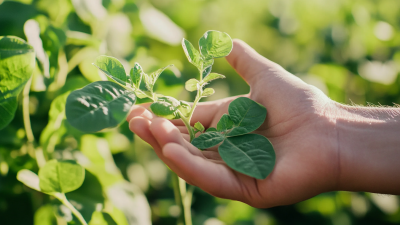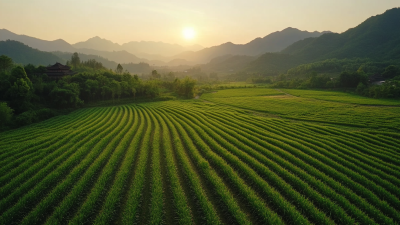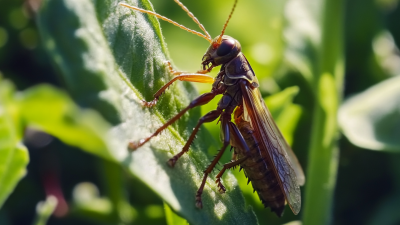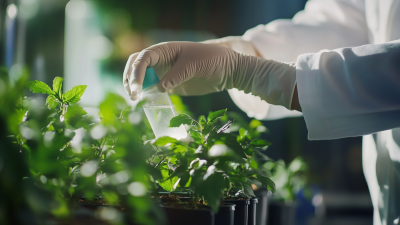 0551-68500918
0551-68500918 





You know, when we talk about agriculture today, it’s pretty wild how fast things are shifting. One thing that really stands out is the role of Global Crop Protection—it’s huge! With all the chatter about food security and sustainability, farmers and ag professionals are really getting creative to keep their crops safe from pests, diseases, and those nasty environmental challenges we all worry about. That’s where Innovation Meiland (Hefei) Co., LTD., based in Hefei, China, comes into play. They're doing some groundbreaking work, diving deep into research and developing new pesticide products and formulations that not only help crops thrive but also fit nicely with sustainable farming practices. So, this guide we’re looking at is going to take you on a journey through the ins and outs of global crop protection. We’re going to unpack the import and export certifications that are key for staying compliant and making trade a breeze in the agricultural world. By getting a handle on this stuff, everyone involved can help pave the way for a more sustainable future while also boosting agricultural productivity. Pretty neat, right?

You know, grasping the ins and outs of global crop protection is super important if we want to farm sustainably. As agriculture keeps changing, dealing with pests, diseases, and weeds is becoming a big deal. Crop protection is all about using a mix of strategies—think biological, cultural, physical, and even chemical methods—all aimed at keeping our crops healthy and boosting yields. By going with integrated pest management (IPM), farmers can get a bit smarter about using these methods, which means they’ll rely less on Chemical Pesticides. And the best part? This really helps with environmental sustainability and food security.
But it’s not just about individual farms; the whole idea of crop protection affects communities and ecosystems all over the globe. Good crop protection practices can help lessen the impact of farming on biodiversity and natural habitats. Plus, they’re key in keeping our food supply secure, especially with climate change and growing populations looming over us. If we’re serious about achieving sustainable farming, really understanding global crop protection is going to arm farmers with the knowledge they need to make choices that are good for their crops, their communities, and the planet as a whole.
This bar chart illustrates the distribution of pesticide usage across different regions in the world for the year 2023. Understanding these trends is crucial for implementing sustainable farming practices that ensure food security while minimizing environmental impact.
You know, Integrated Pest Management, or IPM for short, is such a crucial part of sustainable farming. It really promotes a balanced way of dealing with pests. Instead of just dumping tons of chemical pesticides on crops, IPM mixes it up by using a variety of strategies—like biological controls, cultural practices, and even some mechanical tricks—to keep those pesky pests in check. This way of thinking is all about recognizing how complex ecosystems are. It encourages farmers to use natural predators, practice effective crop rotation, and manage their habitats, which helps cut down on harmful chemicals while still keeping those crop yields healthy.
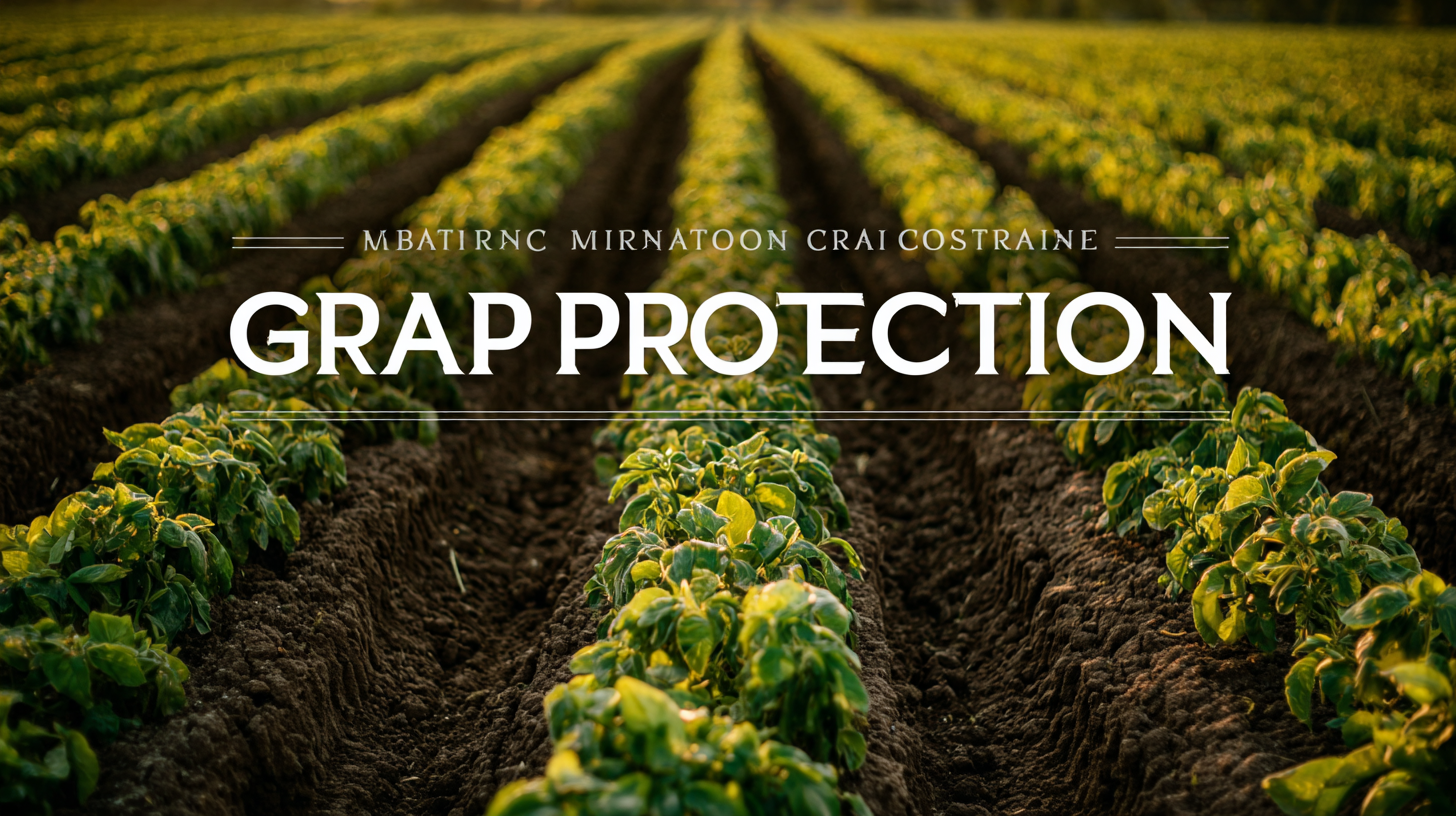
When farmers use IPM, they can keep a closer eye on pest levels, which means they can act quickly and efficiently when issues pop up. It’s cool because it promotes tools like pheromone traps and even the introduction of good bugs, helping create a better environment overall. By putting a priority on the health of our planet, IPM doesn’t just protect biodiversity; it’s also a win for the long-term success of farming. Plus, as pest pressures evolve, IPM gives farmers the flexibility to adapt their strategies, ensuring they can keep their agricultural practices sustainable while minimizing any negative impacts on the environment.
You know, effective crop protection is super important for sustainable farming. It really helps crops do well against all sorts of threats, like pests, diseases, and even some environmental stresses. A report from the Food and Agriculture Organization (FAO) points out that global crop losses due to pests and diseases can be over 40%! That definitely shows how urgent it is to have solid protection strategies in place. By using a mix of essential tools and techniques, farmers can really boost crop health and yields, which is key for agricultural success.
One major player in crop protection is integrated pest management, or IPM for short. This method brings together biological control, habitat manipulation, and a smart use of chemical pesticides, all while keeping the ecosystem in balance. Studies have shown that farms using IPM can cut pesticide use by as much as 50% without losing any yield. Pretty impressive, right?
Here’s a handy tip: keeping an eye out for pests regularly can really help farmers spot problems before they turn into big headaches. Plus, using tech like drones and satellite imaging can make spotting these issues even easier, allowing for quick action when needed.
Also, choosing resilient crop varieties is super important in managing diseases. Research indicates that these resistant varieties can reduce crop disease occurrences by 30-60%. How cool is that?
And here’s another good tip: teaming up with local agricultural extension services can give farmers fantastic insights on picking the right resilient varieties specific to their area. That can really boost their crop protection game!
You know, when it comes to farming, both organic and conventional methods have their pros and cons that farmers really need to think about for sustainable crop protection. A report from the Food and Agriculture Organization (FAO) in 2022 found that organic farming can cut down synthetic pesticide use by a whopping 90%! That’s huge and really helps to lighten the load of chemicals on our ecosystems. Plus, organic farming often leads to healthier soil and more biodiversity, which can make crops better at fending off pests over time. But hey, there’s a catch: organic farms usually yield about 20% less compared to conventional ones. That can be a pretty big deal for small farmers when it comes to making a profit.
Now, flipping to the other side, conventional farming really makes use of modern chemicals and GMO tech to boost crop resilience and increase yields. A detailed study by the United States Department of Agriculture (USDA) points out that these conventional farms can produce up to 30% more than organic ones, which certainly helps in meeting the global food demand. But it’s not all sunshine and rainbows; depending too much on chemicals can bring about issues like pesticide resistance and environmental degradation. In fact, the National Academy of Sciences has reported that around 80% of the pesticides used can drift off into nearby areas, which raises some serious health and environmental red flags. So, farmers definitely have some tough choices to make as they figure out the best crop protection strategies that align with their goals and sustainability targets.
You know, the world of crop protection is changing really fast these days, all thanks to the growing need for more sustainable farming practices. It’s pretty exciting to see the trends moving towards new and innovative solutions that not only keep our crops safe but also help the environment. Biopesticides, which are made from natural materials, are starting to shine as a safer option compared to the old-school chemicals we used to rely on. They use the power of nature to tackle pests while being gentle on the good bugs and soil organisms, which is a win for everyone involved!
And let’s not forget about technology—it’s playing a huge part in the future of crop protection too. With precision agriculture, farmers can tap into data analytics and IoT devices to keep an eye on their crops in real-time, applying pest control only when it’s really needed. This targeted way of doing things means less chemical use, better crop yields, and way less waste. Plus, strategies like integrated pest management (IPM) are becoming super popular. They mix biological, cultural, and mechanical methods to create a solid defense against pests, all while keeping sustainability at the forefront.
As we look ahead, embracing these cool innovations and sticking with sustainable practices is going to be key if we want to keep global agriculture productive and resilient. Crop protection methods that care for the environment won’t just tackle the issues brought on by climate change but will also help secure food for future generations. How awesome is that?

You know, when it comes to sustainable farming, embracing global crop protection practices is absolutely essential. Take a look at what’s happening in California's agriculture; it’s really something! Farmers there teamed up with agricultural scientists to keep a close eye on pest populations. They started using integrated pest management (IPM), and guess what? It really paid off! Instead of relying heavily on chemical pesticides, they were able to make more targeted interventions. This not only boosted crop yields but also helped improve biodiversity on farmlands. It’s amazing how technology and nature can work hand in hand like that.
Then there’s Brazil, where things got pretty interesting too. Farmers are really focusing on agroecological practices to tackle crop diseases, which is super impressive. Just look at Maria; she incorporated resistant crop varieties and organic farming techniques, and the results have been fantastic! By rotating her crops and mixing up the plant species, she managed to reduce disease pressure while also improving the health of her soil. It just goes to show how local knowledge can really complement modern farming methods. These examples highlight just how important it is to adapt global crop protection strategies to local needs in order to make sustainable farming thrive all over the world.
: Organic farming can reduce synthetic pesticide use by up to 90%, enhance soil health and biodiversity, and improve pest resistance over time.
Organic practices may lead to lower yields, producing about 20% less than conventional farms, which can impact profitability, especially for small-scale farmers.
Conventional farming leverages modern agrochemicals and genetically modified organisms (GMOs), allowing for yields that can be up to 30% higher than organic systems.
Reliance on chemical inputs can lead to pesticide resistance and environmental degradation, with approximately 80% of pesticide use potentially drifting into surrounding environments.
Future trends include the use of biopesticides, precision agriculture utilizing data analytics, and integrated pest management (IPM) strategies which combine multiple practices for effective pest control.
Biopesticides, derived from natural materials, provide a safer alternative to traditional chemicals, managing pests while minimizing harm to beneficial insects and soil organisms.
Precision agriculture employs data analytics and IoT devices to monitor crop health in real-time, allowing for targeted pest control measures, reducing chemical use and optimizing yields.
In California, farmers implemented integrated pest management (IPM), which reduced reliance on chemical pesticides while enhancing crop yields and biodiversity.
Farmers in Brazil used resistant crop varieties and organic farming techniques, rotating crops and diversifying plant species, which helped reduce disease pressure and improve soil health.
Embracing innovations and sustainable practices is crucial for ensuring productivity, resilience, and environmental stewardship in agriculture, especially in light of climate change challenges.

